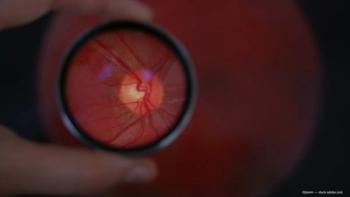
Re-treatment procedure can help manage incomplete cuts, buttonholes
Refractive surgeons can achieve better management of incomplete microkeratome cuts and buttonholes following LASIK by recutting a larger flap.
ParisRefractive surgeons can achieve better management of incomplete microkeratome cuts and buttonholes following LASIK by recutting a larger flap.
This re-treatment procedure is found to be safe and effective with excellent best-corrected visual acuity (BCVA).
Joseph Frucht-Pery, MD, of Jerusalem, Israel, outlined this management approach by presenting the results of a retrospective interventional case series during a refractive surgery free paper session at the European Society of Cataract and Refractive Surgeons meeting.
He said 18 consecutive patients (among 4,864 LASIK procedures) participated in the case series. Most of the patients had incomplete cuts, including irregular caps, thin flaps or free cups, during their initial LASIK procedure. There were 8 females and 10 males between the ages of 22 to 57 years.
In the initial LASIK procedure, the preoperative spherical equivalent of the patients was between 1.25 to 6.75 D. The K readings were between 43 and 45.2 D, and the BCVA was between 6/9 and 6/5. All of the original procedures were performed with a Hansatome microkeratome (Bausch & Lomb), aiming to a 160-µm flap.
Following the adverse problems, the laser procedures were cancelled; the flap was replaced and remained untouched. After 3 to 5 months, LASIK was performed again in 16 patients (two patients did not show for re-treatment). The recut of the flap was performed with the Hansatome microkeratome, this time creating a 180-µm flap. The laser procedure followed, using the Bausch & Lomb 217Z laser. All the re-treatments were relatively uneventful.
At the final examination after 13 to 16 months, Dr. Frucht-Pery reported that the spherical equivalent in these eyes were between 0 and 0.50 D and the uncorrected visual acuity (UCVA) was between 6/9 and 6/5.
"In terms of loss/gain in visual acuity, 1 patient gained 1 line and 5 patients lost 1 line," he added.
Newsletter
Don’t miss out—get Ophthalmology Times updates on the latest clinical advancements and expert interviews, straight to your inbox.








































